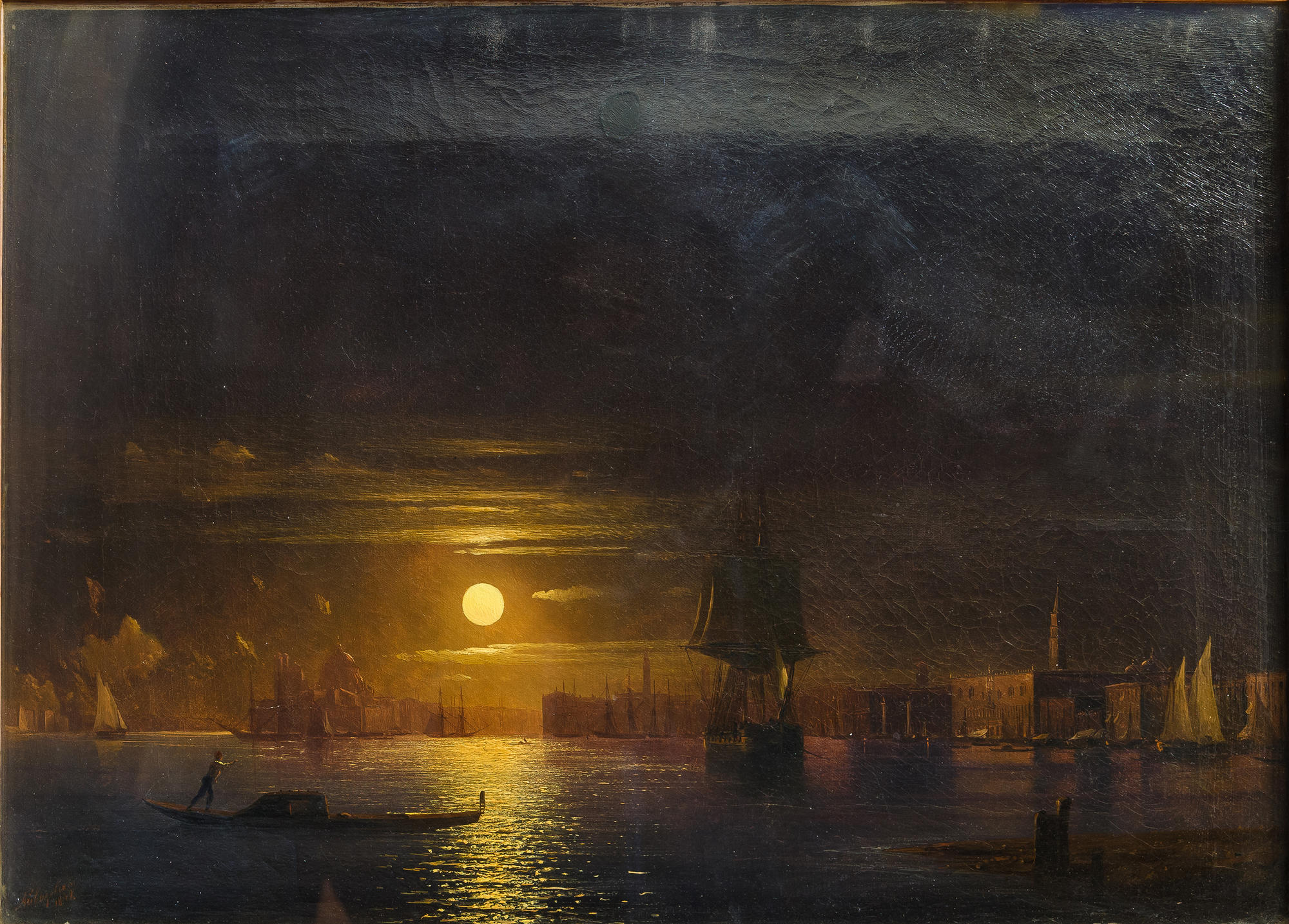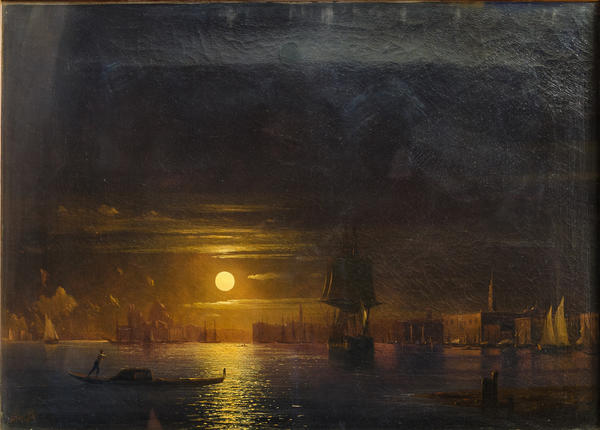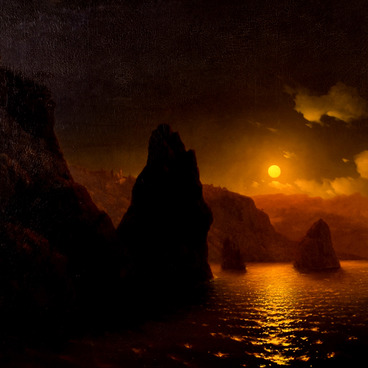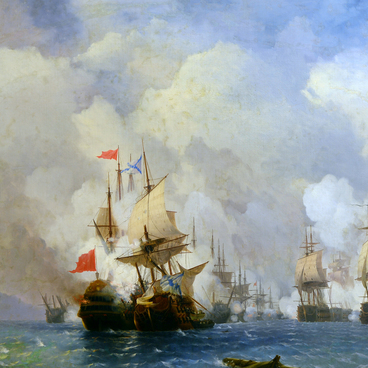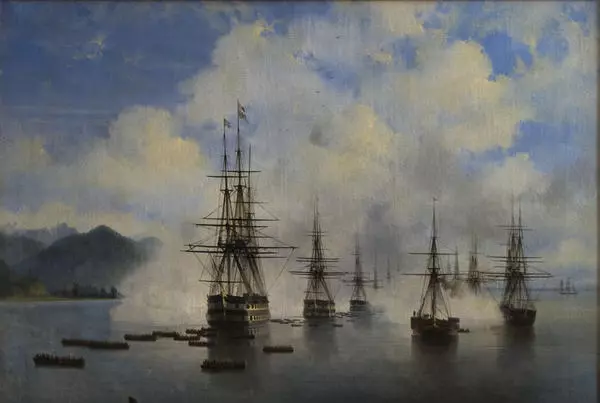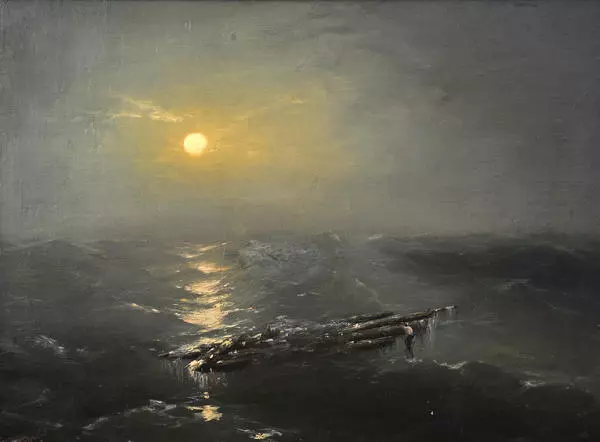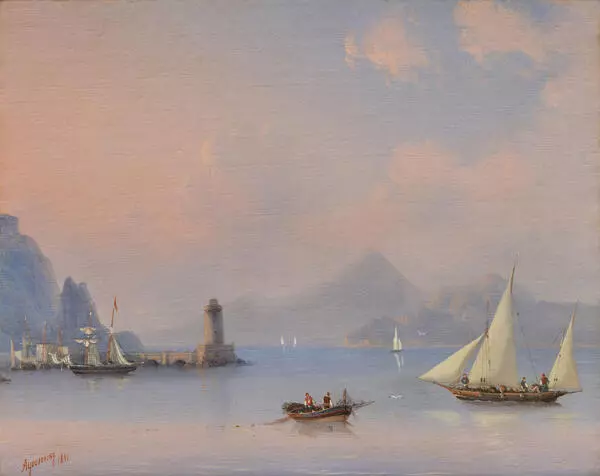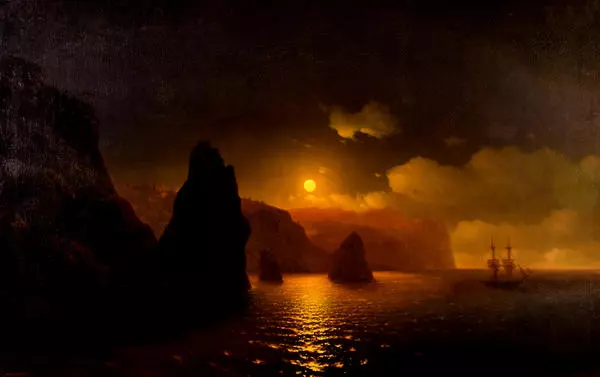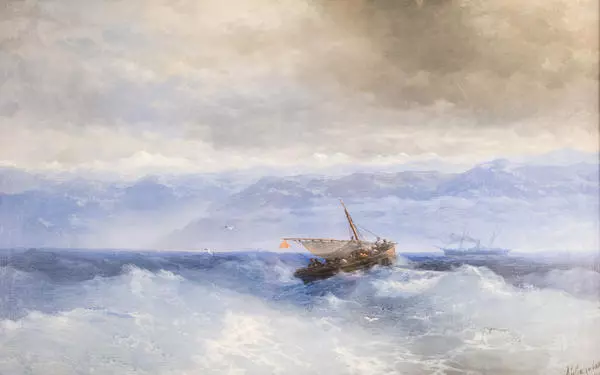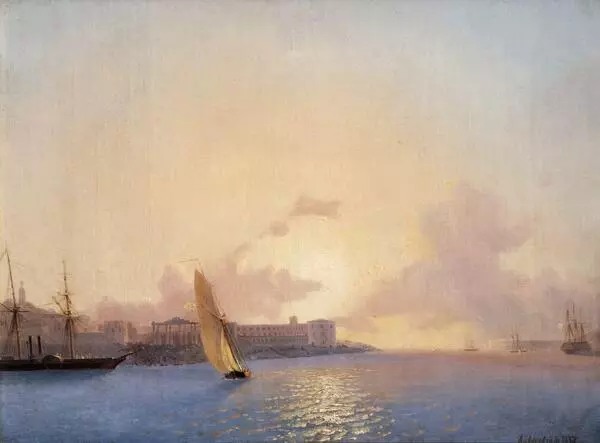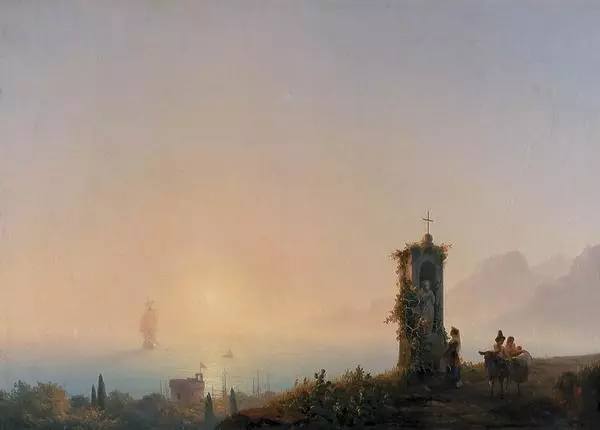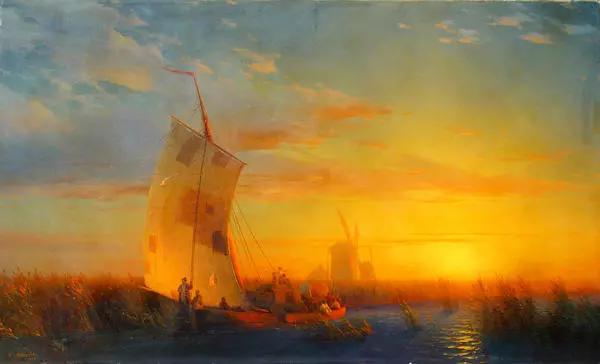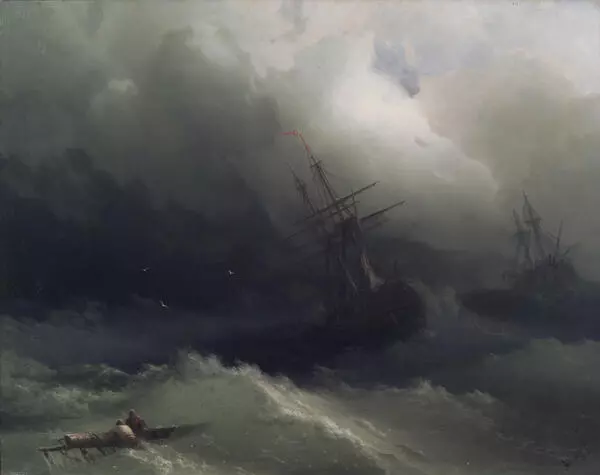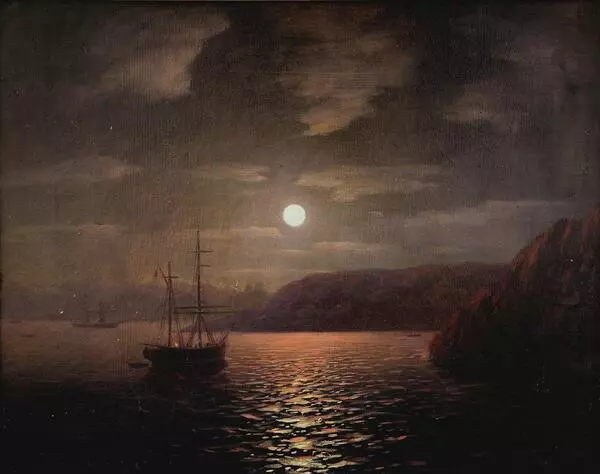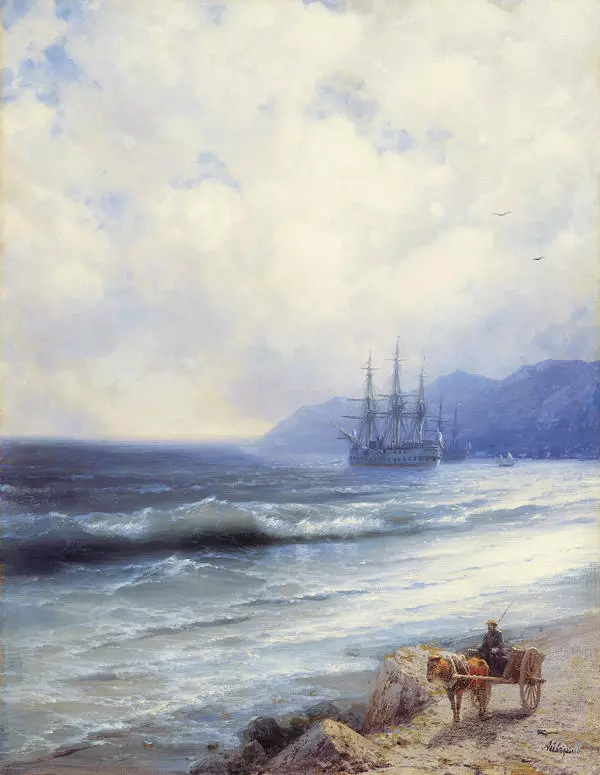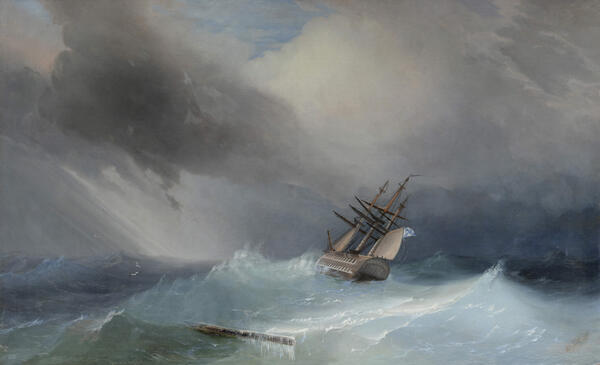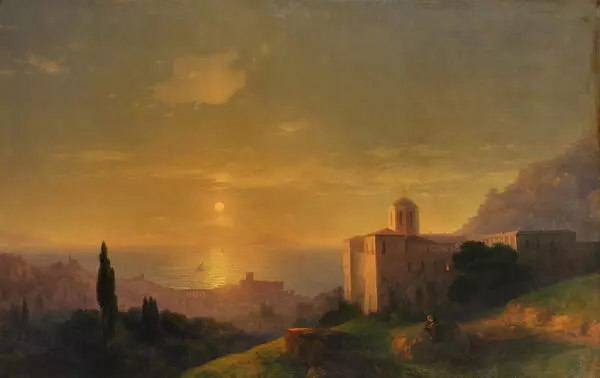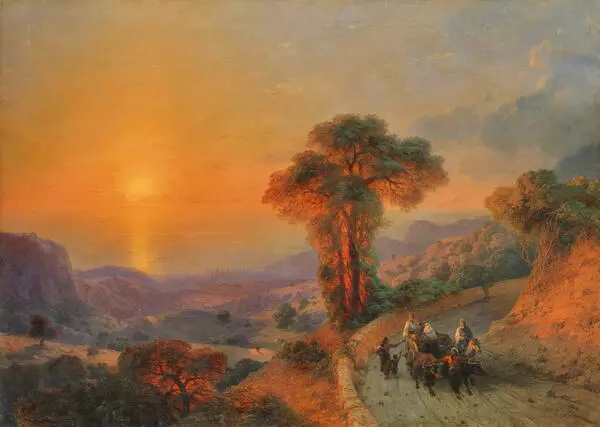From 1840 to 1844, Ivan Aivazovsky lived and worked in Italy where many of the 19th century great artists were mastering their skills. In those years, Rome was known as ‘the world’s academy of arts’. Though relatively young, Aivazovsky soon settled down in Italy and was admitted to the local artistic circles. He became closely acquainted with writer Nikolai Gogol and painter Alexander Ivanov who both spoke very fondly of his talent and strongly supported him.
Later, Aivazovsky worked in Sorrento, Naples, and Rome but it was in Venice, the town on water, that the artist did the most inspirational of his paintings during his trip abroad. Aivazovsky first displayed most of those paintings at the exhibition of the Academy of Fine Arts in Paris and was awarded a gold medal. His paintings invariably received accolades in European press.
In Venice, Aivazovsky did a lot of sketches to commit to his memory the canals and embankments, San Marco Square and grandeur palazzos, fishermen and merchants, everything that captured the attention of the young artist. He made a lot of wonderful pencil drawings here from nature. Based on one of such Venetian drawings, the artist later did a small painting, Venice.
Created back home, in Feodosia, it was to a large extent inspired by the memories of Italy’s beautiful nature and architecture. The composition of the painting is rather simple. We are looking at Venice from the Grand Canal with a moon glade and quietly riding gondolas. Aivazovsky’s thoughts often turned to this city celebrated in verse by many lyricists including Alexander Pushkin, the most important poet in the painter’s life.
The journey to Italy became a turning point in the life of Aivazovsky. In Rome, the artist wrote:
Later, Aivazovsky worked in Sorrento, Naples, and Rome but it was in Venice, the town on water, that the artist did the most inspirational of his paintings during his trip abroad. Aivazovsky first displayed most of those paintings at the exhibition of the Academy of Fine Arts in Paris and was awarded a gold medal. His paintings invariably received accolades in European press.
In Venice, Aivazovsky did a lot of sketches to commit to his memory the canals and embankments, San Marco Square and grandeur palazzos, fishermen and merchants, everything that captured the attention of the young artist. He made a lot of wonderful pencil drawings here from nature. Based on one of such Venetian drawings, the artist later did a small painting, Venice.
Created back home, in Feodosia, it was to a large extent inspired by the memories of Italy’s beautiful nature and architecture. The composition of the painting is rather simple. We are looking at Venice from the Grand Canal with a moon glade and quietly riding gondolas. Aivazovsky’s thoughts often turned to this city celebrated in verse by many lyricists including Alexander Pushkin, the most important poet in the painter’s life.
The journey to Italy became a turning point in the life of Aivazovsky. In Rome, the artist wrote:
